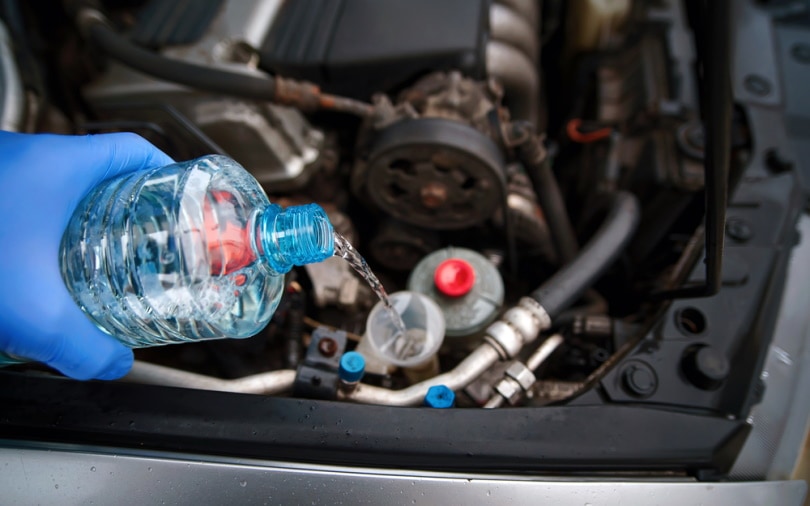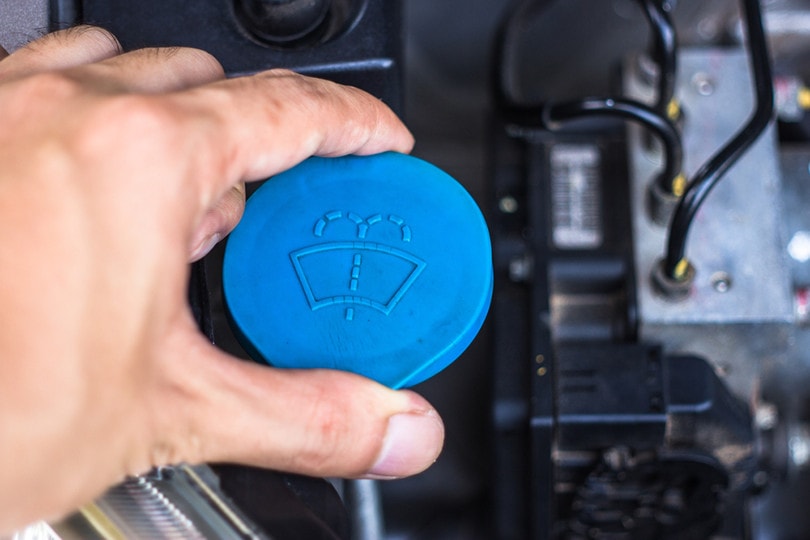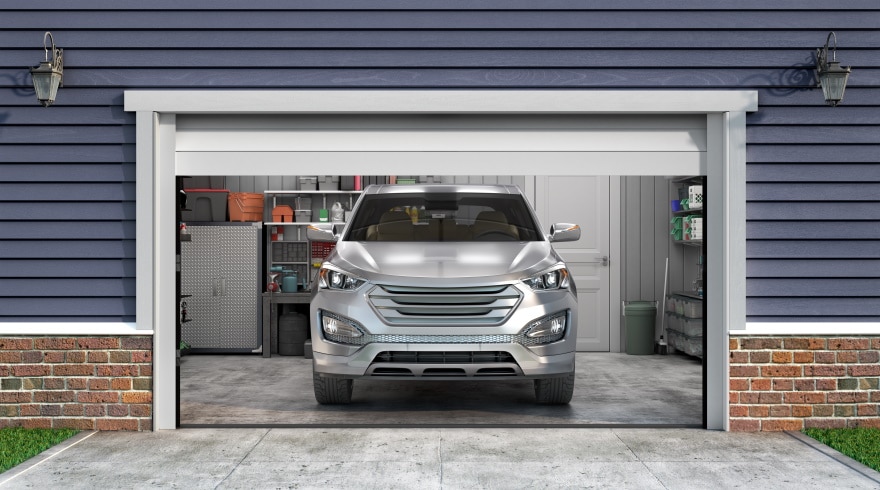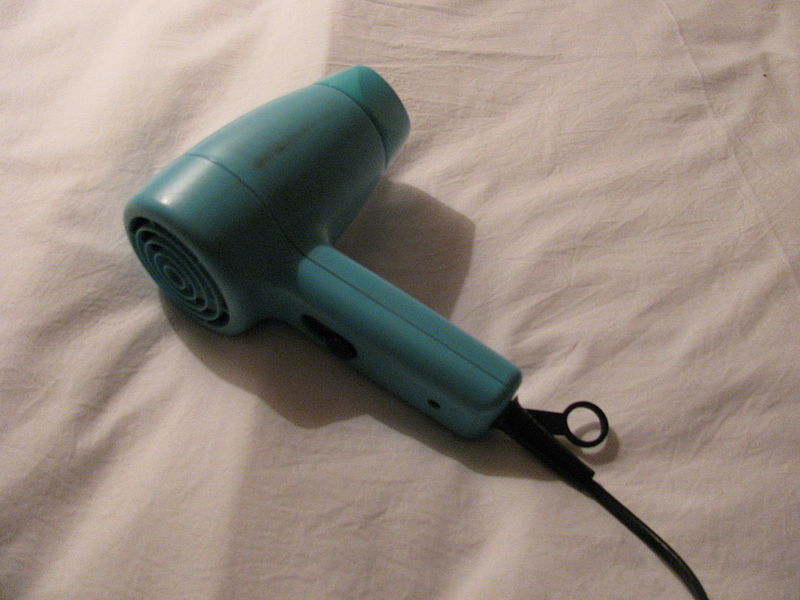Does Windshield Wiper Fluid Freeze? Tips, Prevention & FAQ
-
Pete Ortiz
- Last updated:

After a fun summer filled with sunshine, it’s time to buckle up for the winter. People will start equipping themselves with winter tires, heavy clothes, and winter shoes, but what goes primarily unnoticed is your vehicle’s windshield wiper fluid. Like most liquids, windshield wiper fluid can freeze in icy weather.
You will wake up one cold morning, get into the car, and try to get the grime and salt accumulated off your windshield only to notice that no fluid is squirting out of the wipers. This means more time spent taking extra steps to get the windshield clear.
The good news is that there are a couple of remedies to solve the situation. In this article, we will take an in-depth look at the problem with windshield wiper fluids freezing and what you can do if you face such issues. Let’s dig in!
What Is Windshield Wiper Fluid?
Windshield wiper fluid is any fluid used to clean the windscreen. It is added to the car and operated with pump jets that are mainly found beneath the windshield or wiper blades. If you want to clean your windscreen, you can automatically engage the jets to squirt the fluid onto the windshield, which will trigger the wipers to clean it.
In some instances, the same applies to specific rear windows and headlights.
The first windscreen cleaners were made around 1936 but came as an aftermarket option added to the car after purchase. General Motors was the first company to install windshield wipers on all vehicles in the 40s, which subsequently led to gained popularity.

Why Does Windshield Washer Fluid Freeze?
There are many washer fluids yet, generally, most of these fluids come with water as a base ingredient. Water freezes at 32°F, which influences the chances of the windshield wiper fluid freezing.
To solve this, you may have to purchase a windshield wiper with antifreeze. The best type of mixture for such is a special winter blend of windshield wiper fluid that is one part antifreeze and one part water.
What Is Antifreeze?
Antifreeze is an additive that prevents water from freezing when reaching its freezing point. It is mainly made up of water, propylene glycol, and ethylene glycol. Propylene glycol can also be found in most cooling systems, especially ones associated with food products, as it is less toxic compared to ethylene glycol.
Methanol is another commonly used fluid in windshield washer fluids, but ethanol is becoming the more preferred type due to toxicity issues. Both fluids are alcohol-based. They defrost a frozen windshield and keep your washer fluid thawed.
How to Check if Your Windshield Wiper Fluid Is Frozen
You may not know that the windshield wiper fluid is frozen until you try using it and no fluid comes out. However, a simple visual check is enough to confirm the status of your windshield wiper fluid.
Just pop your hood and check the reservoir tank for the windshield wiper fluid. This is mainly found in the compartment with the cap that has a water symbol on it. It is located at the side of the car towards the front and will have a label to identify it.
Preventing Your Windshield Wiper Fluid From Freezing
You may be in a situation where you cannot get your hands on antifreeze. This doesn’t make the situation completely helpless, though. There are several things you can do to ensure your regular windshield wiper fluid does not freeze.
Keep the Car in a Well-Insulated Garage
Parking the car in a warm place will ensure the car’s wiper fluid does not freeze. A heated garage will come in handy. Your car will keep warm, and apart from the wiper fluid, it will also ensure an easy start in the morning as no freezing will have taken place on the engine block.

Wiper Fluid Heater
Based on the type of car you own, you may have the space to add a heater for the washer fluid. Some cars will even come with a pre-installed windshield washer heater.
Make Your Own Windshield Wiper Fluid
With a couple of ingredients found in your home, you can create a wiper washing fluid that can withstand the cold weather without freezing. This will require several things, including distilled water, lather soap, and rubbing alcohol.
Get a big container and pour in 4 liters of water, fluid alcohol with a percentage of at least 8 ounces of 99% rubbing alcohol, 3.8 liters of water, and around 1 tablespoon of lather soap.
Mix the ingredients and pour the resulting mixture into your windshield fluid container after draining the previous fluid. Then, test out the resulting mixture to ensure it does its job properly. If you notice a bit of freezing, you can top it off with some more rubbing alcohol to ensure no freezing occurs.
What to Do if Your Windshield Wiper Fluid is Frozen
What if the car washer fluid is already frozen? What are some of the remedies you have at hand to solve the problem?
Using an Engine Block Heater
The car may fail to start during cold temperatures, and the windscreen wiper fluid will most likely freeze, too. There are several reasons for this, including the icing of the exhaust system, the battery losing power, and the slow freezing of the oil system.
Engine blocks are an answer to most cars in extremely cold climates, especially for diesel engines, which are especially hard to get started in colder areas. They keep most fluids inside the car, especially motor oils and windshield wiper fluids from freezing.
Heating the car at least 3–4 hours before you start it will warm the engine, which will, in turn, warm most of the fluids and ensure the battery system has enough heat to start the car. Afterward, the engine block heater can be switched off, as the car can safely keep warm as long as the engine is running.
Salamander Heater
This heater normally uses propane or kerosene with electricity to blast hot air. You can use this to warm the windshield fluid reservoir and several other car parts.
How it works is that you aim the heater at the part you want to be warmed and hold it until the reservoir gets thawed. You can then drain it and add some antifreeze fluid. However, as you do this, ensure you do not overheat the car to the point of causing some damage. If you are unsure of how to use it, consult an expert.
Use a Hairdryer
This is one of the more readily available ways of warming your washer fluid reservoir. Point the hairdryer to the frozen reservoir till the liquid starts to thaw. You will need some patience since it may take time to thaw out the reservoir.

Heating Pads
All you need to do is stuff a few heating pads around the reservoir tank at the lowest possible area to ensure the frozen liquid is thawed by heat rising up from the pads.
Remove the Windshield Wiper Fluid Reservoir Tank From the Car
A more advanced way of dealing with a frozen washer fluid is to get the whole reservoir tank out. It may sound easy but could prove a bit challenging and require the intervention of a professional. The advantage of this method is you can bring the tank somewhere warmer and get the fluid to thaw out before draining it. Afterward, you will need to reinstall it back to the tank.
Conclusion
As stated above, windshield wiper fluid can freeze in cold weather. However, you can choose a windshield fluid that has anti-freezing qualities to ensure you don’t run into problems while driving in cold areas. However, you can take precautions to prevent this, such as parking in a warm area. If you have no other choice, you should get a heater or wake up earlier to warm the car adequately.
Featured Image Credit: Tricky_Shark, Shutterstock
Contents



